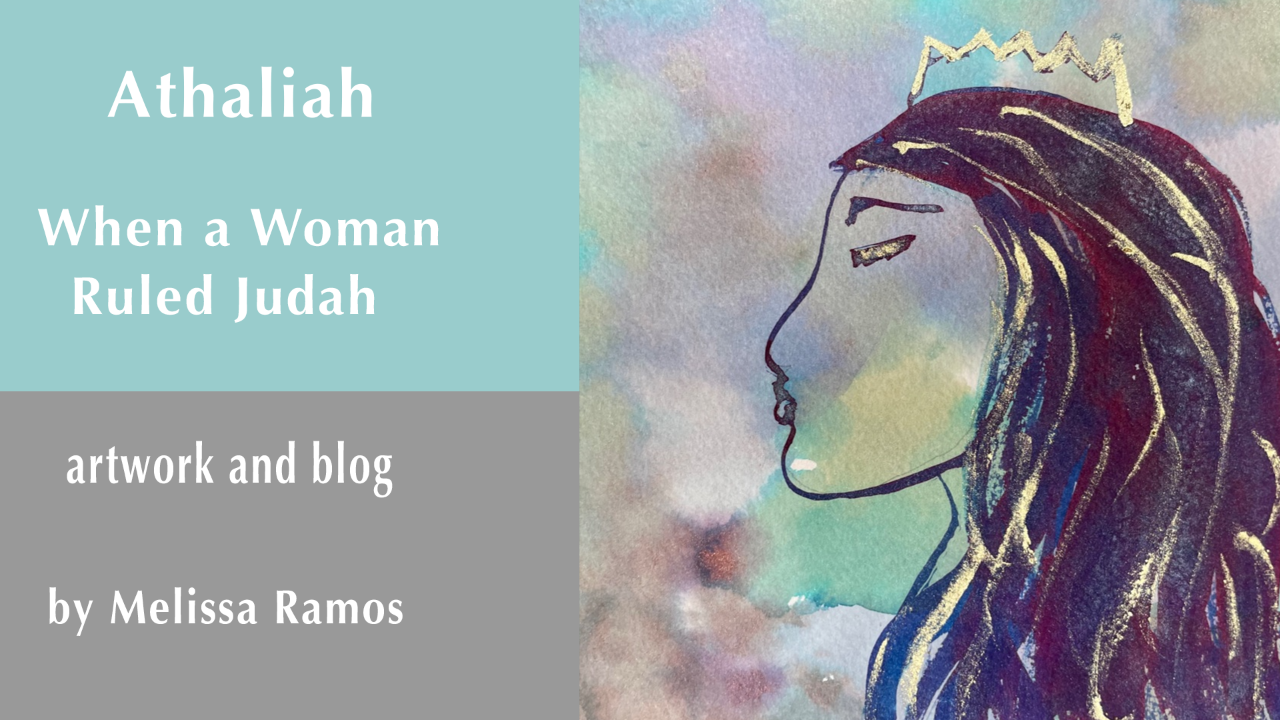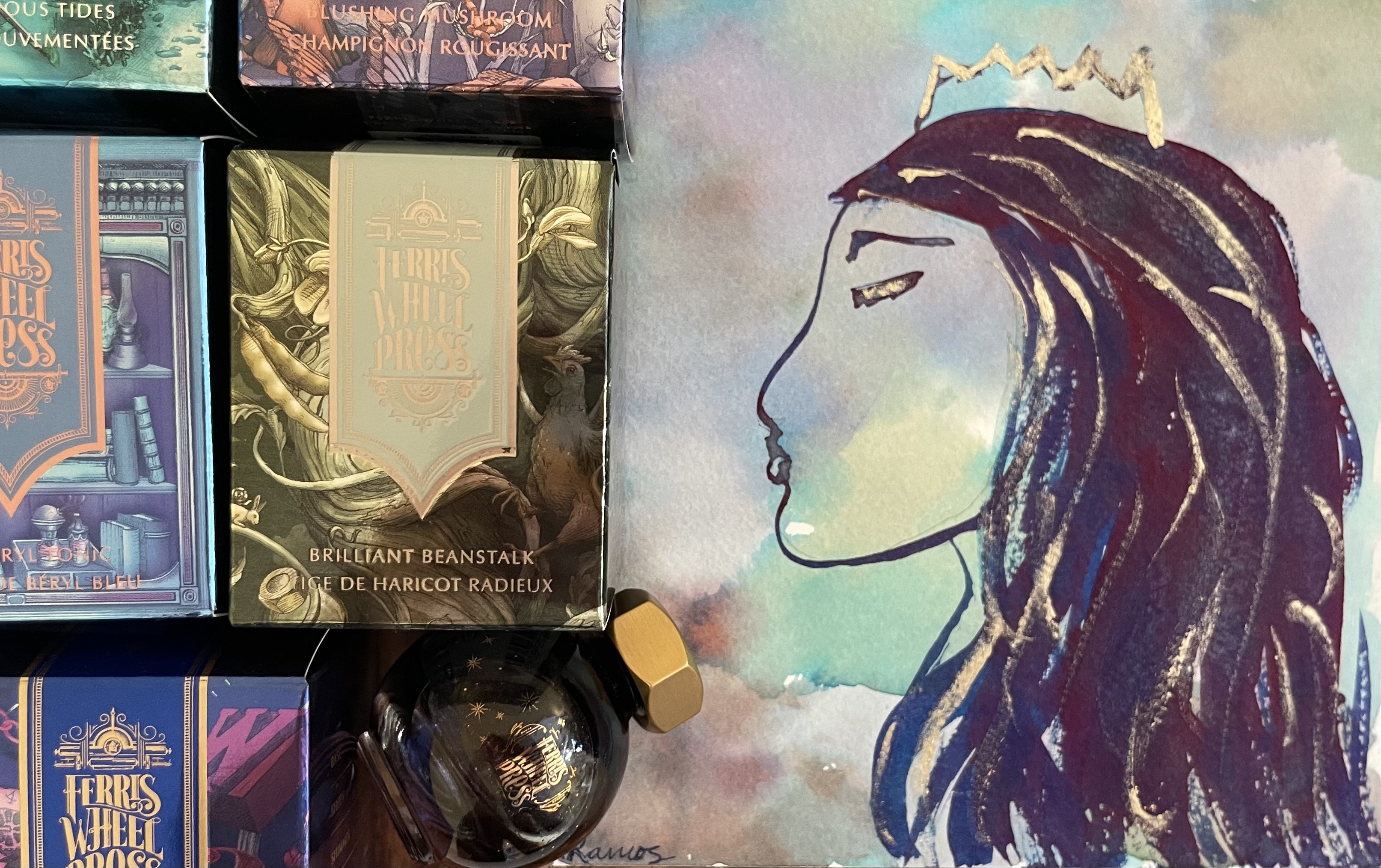Athaliah: When A Woman Ruled Judah
Oct 12, 2023
“Joash remained hidden for six years while Athaliah ruled the land.” The Hebrew Bible records an astonishing thing: a woman ruled the southern kingdom of Judah for six years after her husband and son died (2 Kings 11 and 2 Chronicles 22-23). Athaliah is portrayed as something of a villain in these narratives, perhaps a counterfoil to the dignified figure of Deborah or to the celebrated bravery of Jael in Judges 4-5. Yet the entire concept of a woman ruling in a culture so rooted in patriarchy makes her a dazzling figure in the Old Testament.
I am currently on sabbatical research leave from my teaching post at my University and have found that dabbling in art, for me, is an embodied way to step away from screens, immerse myself in colors, brushes, and the physicality of bringing something to life that only lives in my mind. Athaliah was a figure in my devotional reading recently, and she seems to have made a home in my biblical imagination. So, I decided to bring her to life.
The question I pondered while doodling this watercolor is: Are we allowed to admire Athaliah?
The biblical literature portrays her as something of a villain. She comes to rule after the death of her husband, the king, and the subsequent death of her son who succeeds him to the throne. Athaliah "sets out to destroy" (Hebrew abd/אבד) the rest of the royal family ("the seed of the kingdom") as she seizes power.
I painted Athaliah the way I see her in my mind. Defiant. Powerful. Unafraid. A force of nature. I used background colors especially of purple and green near the face as a color motif of villainy.

[Calligraphy inks used for this piece are by Ferris Wheel Press]
And is she bit of a villain? In the biblical text, certainly. But perhaps no more than David who murdered Uriah because he wanted Uriah’s wife. And David was called a friend of God. No more than Solomon who, according to the biblical text, also promoted the worship of idols by his marriages and reached his lauded success by means of oppressive labor practices. Yet Solomon is remembered for his wisdom and the expansion of the empire of Israel.
What were the exploits of Athaliah from her six years of rule? Did she write psalms of proverbs or other songs for the Temple? Who were her courtiers, prophets and prophetesses? Did she have a Nathan or a Huldah to advise her during her reign? Was anything written about her in the "annals of the kings of Judah" like the rest of the monarchs? I choose to believe that there was good to her reign as well.
Feminist and womanist scholars do what they usually do with this kind of text. They observe her ambition as an affront to patriarchal gender norms in Iron Age West Asia, recognizing that Athaliah is a singular biblical character who takes total agency over her own life and situation in a way that women readers may find empowering. The biblical text also portrays Athaliah as a ruler who promotes the worship of idols, and feminist scholars wonder whether this portrayal served political agendas or religious ideals of various sorts.
Feminist scholars are likely to be interested in how this tale is used to caution women against taking on leadership roles and to cast aspersion on women in positions of power. Many of us who are readers know this trope well (sigh).
Womanist scholars might highlight Athaliah’s resistance against oppressive power structures that barred women from positions of power especially in a monarchy. Womanist scholars might want to reexamine the villainy of Athaliah and explore how her rise to power took place in a complex system of religious and political power structures.
I offer my own vision of Athaliah in this piece of art. What is yours?
If you want to read more about Athaliah, citation suggestions are below.
For artsy folks who want to know more about paper and ink, I used Fluid Watercolor Paper (cold press finish) and calligraphy inks from Ferris Wheel Press: Adventurine, Brilliant Beanstalk, Blushing Mushroom, Blue Beryl Tonic, Tumultuous Tides, and Tumbling Time Blue. The gold added is Schmincke's Aqua Bronze in rich pale gold.
Ackerman, Susan. "The Queen Mother in the Cult in Ancient Israel." Journal of Biblical Literature 112 (1993) 385-401.
Brenner, Athalya. “Athaliah.” In The Israelite Woman: Social Role and Literary Type in Biblical Narrative. Sheffield, England: 1985; 28–31.
Brewer-Boydston, Ginny. "Good queen mothers, bad queen mothers: the theological presentation of the queen mother in 1 and 2 Kings." PhD diss., 2011.
Katzenstein, Hanna J. “Who Were the Parents of Athaliah?” Israel Exploration Journal 5 (1955): 194–197.
Klein, Reuven Chaim. “Queen Athaliah: the daughter of Ahab or Omri?” Jewish Bible Quarterly 42, no.1 (2014): 11-20.
Macwilliam, Stuart. “Athaliah: A Case of Illicit Masculinity.” In Biblical Masculinities Foregrounded. Edited by Ovidiu Creanga and Peter-Ben Smit, 69-85. Sheffield Phoenix Press, 2014.
Sergi, Omer. “Queenship in Judah revisted: Athaliah and the Davidic dynasty in historical persepective” Tabou et transgressions (2015): 99-112.
Women in Scripture. Edited by Carol Meyers. New York: 2000.

